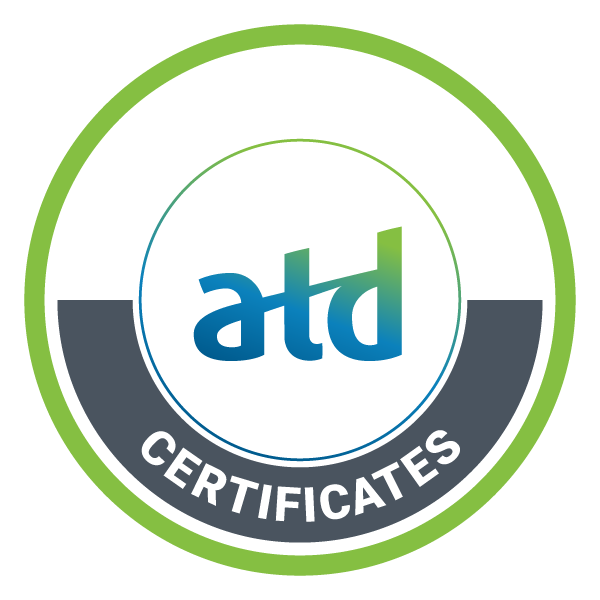E-Learning Instructional Design Certificate
Great e-learning starts with great instructional design.
Use instructional design principles and models to design asynchronous e-learning courses that engage participants and meet business outcomes.
Live Online
Face to face
Private training
E-Learning Instructional Design Certificate: Course Info
Self-paced e-learning can be deployed in a variety of ways—from full online courses to performance support opportunities to blended learning experiences. Regardless of how you use e-learning, intentional and thoughtful instructional design is an essential element. Well-designed e-learning courses and modules engage learners and enable them to acquire and apply new knowledge and skills.
Applying Instructional Design Principles to E-Learning Course Creation
This course covers the entire instructional design process from start to finish and shows you how to apply that process to e-learning projects. Under the guidance of an experienced facilitator, you’ll have the chance to focus on and practice critical e-learning course creation tasks, including:
Creating an e-learning design plan
Storyboarding content and planning for development
Choosing delivery media (video, text, SCORM, etc.)
Working with SMEs to develop e-learning content
Curating and creating content for self-paced learning
Research Backed: Based upon extensive research in the field, ATD’s E-Learning Instructional Design Certificate combines the latest instructional design models and techniques with proven e-learning design strategies.
This certificate course aligns to the Instructional Design Capability of the Talent Development Capability Model™. The concepts covered in the course are reflected in the TDBok™ Guide, Talent Development Body of Knowledge, second edition, the definitive resource for the talent development profession.


Format
Face-to-Face
Live Online
Private Training

Roles
Learning Technologist, Instructional Designer

Capability Areas
Instructional Design, Technology Application

Level
Capable

Language(s)
English

Credits
APTD 21
CPTD 21
CEU 2.1
HRCI 21
PDC 21

Recognition
ATD Certificate of Completion, Digital Badge
FAQs
Course Topics
Dates & Locations
Time Zone: UTC
Credits & Recognition
 ATD Certificate of Completion
ATD Certificate of Completion Digital Badge
Digital Badge 21 Learning Hours
21 Learning Hours 2.1 CEUs
2.1 CEUs| Additional Credits | Type | Credits | |
|---|---|---|---|
| APTD Credential | Professional Development Hours/Recertification Points | 21 | More Info |
| CPTD Credential | Professional Development Hours/Recertification Points | 21 | More Info |
| HR Certification Institute® | Recertification Credit Hours | 21 | More Info |
| Society for Human Resource Management | Professional Development Credits (PDCs) | 21 | More Info |
Facilitators
WHAT OUR PARTICIPANTS ARE SAYING
Testimonials
"As a longtime "live" trainer, I needed to venture into the 21st century. This was a great introduction to e-learning and design for me, but those in my class who are already designing e-learning also learned new techniques to make their training courses better."
"I was enrolled in the course through my employer, but I found it useful, relevant, and timely for my job expectations. The facilitators were great instructors with a wealth of useful knowledge."
"The E-Learning Instructional Design Certificate program is a practical approach to designing e-learning. I would recommend it first on its content and second on its delivery, which is very lively and engaging."
Have a Group to Train?
Want to purchase multiple seats or schedule a dedicated team training experience tailored to your organization’s needs? Fill out the form below to schedule a call with an ATD Enterprise Solutions Account Executive to learn more.
